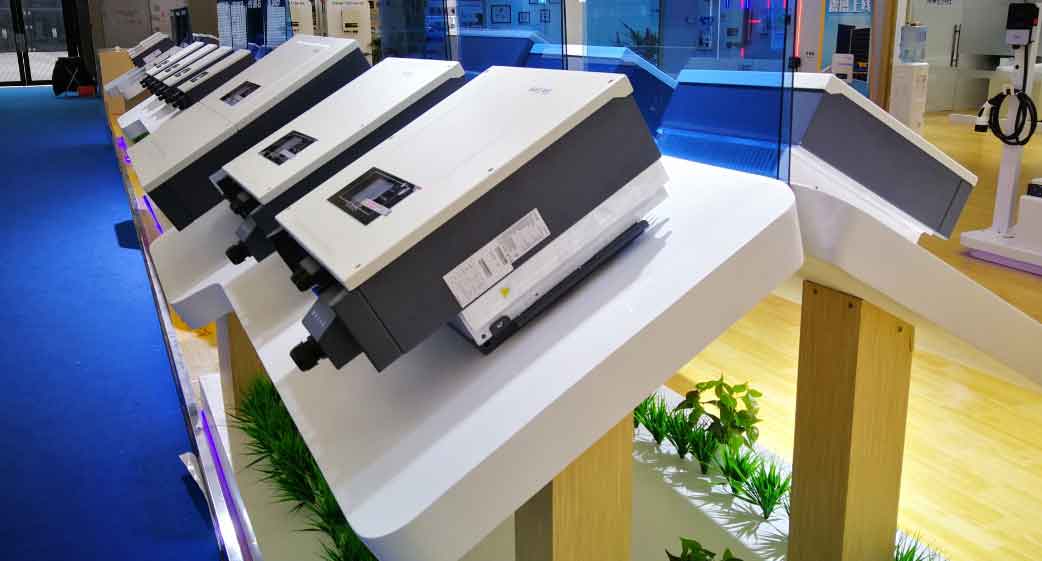Solar inverters are pivotal component in solar energy systems, playing an essential role in converting the direct current (DC) produced by solar panels into alternating current (AC) that can be used by household appliances and fed into the electrical grid. Beyond this fundamental function, solar inverters are critical for maintaining grid stability and optimizing battery energy management in solar power systems. This article explores the multifaceted role of solar inverters in enhancing grid stability and managing battery energy storage.

Understanding Solar Inverters
A solar inverter is an electrical device that converts DC from solar panels into AC. This conversion is necessary because most household appliances and the electrical grid operate on AC. There are various types of solar inverters, including string inverters, microinverters, and central inverters, each with unique characteristics and applications.
Grid Stability and Solar Inverters
Grid stability refers to the ability of the electrical grid to provide a continuous and reliable supply of electricity despite fluctuations in demand and supply. Solar inverters contribute to grid stability in several ways:
1. Frequency Regulation: Solar inverters can help regulate the frequency of the electricity supplied to the grid. They can adjust their output to match the grid’s frequency, helping to maintain a stable and consistent power supply.
2. Voltage Regulation: Solar inverters are capable of regulating voltage levels by adjusting their output voltage to match the grid’s requirements. This helps prevent voltage fluctuations that can damage electrical appliances and disrupt the grid.
3. Reactive Power Control: Solar inverters can supply or absorb reactive power, which is essential for maintaining voltage levels and ensuring efficient power transmission. This capability helps prevent power losses and supports grid stability.
4. Islanding Detection: Solar inverters can detect when the grid is down (islanding) and automatically disconnect from it. This prevents the solar energy system from feeding electricity into a faulty grid, which could endanger utility workers and damage equipment.
Table 1: Solar Inverters and Grid Stability
| Function | Description |
|---|---|
| Frequency Regulation | Adjusts output to match grid frequency |
| Voltage Regulation | Adjusts output voltage to stabilize grid voltage |
| Reactive Power Control | Supplies or absorbs reactive power |
| Islanding Detection | Disconnects from grid during faults |
Battery Energy Management and Solar Inverters
Battery energy management is a critical aspect of solar power systems, ensuring that stored energy is optimally used and preserved. Solar inverters play a crucial role in managing battery energy in the following ways:
1. Charge and Discharge Control: Solar inverters manage the charging and discharging cycles of batteries, ensuring that they are charged when excess solar power is available and discharged when needed. This helps maintain battery health and extend their lifespan.
2. Peak Shaving: Solar inverters can use stored battery energy during peak demand periods to reduce the load on the grid. This practice, known as peak shaving, helps lower electricity costs and prevent grid overload.
3. Backup Power Supply: In the event of a power outage, solar inverters can switch to battery power, providing an uninterrupted power supply. This feature is particularly valuable in areas prone to grid instability or frequent outages.
4. Energy Arbitrage: Solar inverters can be programmed to charge batteries during periods of low electricity prices and discharge them during high-price periods. This energy arbitrage maximizes cost savings and ensures efficient use of stored energy.
Table 2: Solar Inverters and Battery Energy Management
| Function | Description |
|---|---|
| Charge and Discharge Control | Manages battery charging and discharging cycles |
| Peak Shaving | Uses stored energy during peak demand periods |
| Backup Power Supply | Provides power during grid outages |
| Energy Arbitrage | Charges and discharges based on electricity price periods |
Comparative Analysis of Solar Inverters for Grid Stability and Battery Energy Management
1. String Inverters: String inverters are commonly used in residential and small commercial solar energy systems. They are cost-effective and relatively simple to install.
Advantages:
- Cost-effective
- Simple installation
Disadvantages:
- Performance can be affected by shading
- Limited flexibility in battery management
2. Microinverters: Microinverters are installed on each solar panel, allowing for individual optimization. They offer better performance in shaded conditions and greater flexibility in battery energy management.
Advantages:
- Individual panel optimization
- Improved performance in shaded conditions
- Greater flexibility in battery management
Disadvantages:
- Higher cost
- More complex installation
3. Central Inverters: Central inverters are used in large commercial or utility-scale solar energy systems. They offer centralized management and are suitable for large arrays with uniform conditions.
Advantages:
- Cost-effective for large installations
- Centralized management
Disadvantages:
- Single point of failure
- Requires professional installation and maintenance
Table 3: Comparative Summary of Solar Inverters
| Type | Advantages | Disadvantages |
|---|---|---|
| String Inverters | Cost-effective, Simple installation | Affected by shading, Limited battery management |
| Microinverters | Individual optimization, Better in shading, Flexible | Higher cost, Complex installation |
| Central Inverters | Cost-effective for large systems, Centralized management | Single point of failure, Requires professional setup |
Conclusion
Solar inverters are indispensable in ensuring grid stability and efficient battery energy management in solar power systems. They regulate frequency and voltage, manage reactive power, and provide critical islanding detection. In terms of battery energy management, solar inverters optimize charging and discharging cycles, enable peak shaving, provide backup power, and facilitate energy arbitrage. The choice of solar inverter—whether string inverter, microinverter, or central inverter—depends on the specific requirements of the solar energy system, including scale, shading conditions, and budget.
Understanding the role of solar inverters in grid stability and battery energy management is essential for designing and maintaining efficient and reliable solar power systems, ultimately contributing to the sustainability and resilience of the energy grid.
